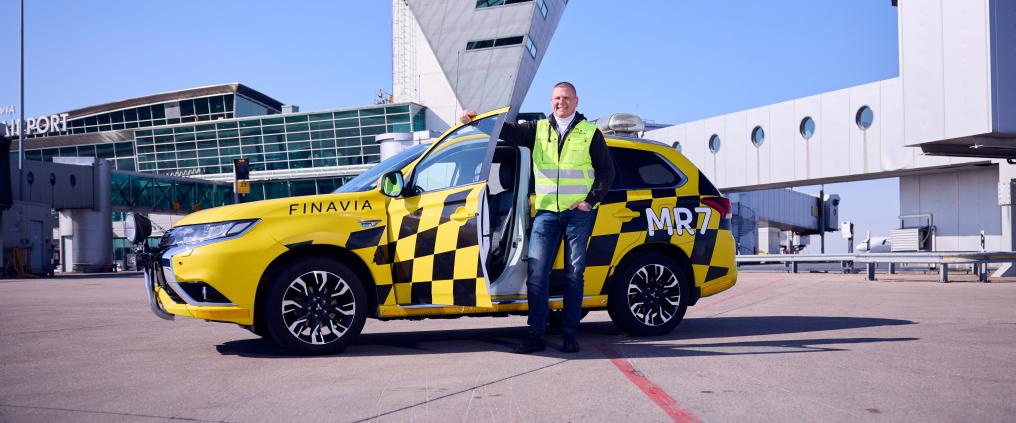"You could say that we are the 'airport's first response' on the apron," says Heikki Kari, Helsinki Airport Marshaller at Finavia.
A marshaller is like a sheriff for the airport. The marshaller is responsible for safety and monitoring how rules are followed on the apron and at aircraft parking stands.
"When you are working on the runways, you are cooperating with air navigation."
In addition to airlines, the apron is also used by ground handling companies, fuel transport, apron buses, technical vehicles, cleaning companies and many authorities.
Kari says that a marshaller is also the person who guides the aircraft to the right places by driving a "Follow Me" vehicle in front of them. Signalling devices, or illuminated marshalling wands, are used to show the pilot where to stop the aircraft.
Marshallers use a yellow vehicle
The marshaller's vehicle, which is marked with "MR-1", has four aviation radios, ground and air radars, aircraft parking stand software and a speed radar for monitoring ground traffic.
“The speed limit at the airport is 30 kilometres per hour in normal conditions and in severe weather conditions 20 kilometres per hour,” Kari says.
Kari says that a marshaller has to continuously “scan” the apron, and they have to intervene in all activities that break the rules as well as any safety issues.
"Everyone working at an airport is responsible for responding to safety risks immediately, regardless of the severity of the risk."
If a marshaller sees loose items on the apron, such as a strap that has come loose from a suitcase, they remove it so that it doesn't end up in the engine of an aircraft, for example.
Finavia trains marshallers
You can't study to become a marshaller at any school. Instead, marshallers are trained by Finavia. Marshallers come from many different backgrounds, but there’s one thing that unites them all.
“You must have excellent English language skills,” Kari says.
The radio language with air traffic control is English, but marshallers must also be able to speak Finnish.
The training takes about nine months and includes online learning and in-person lessons, as well as a competence demonstration. In order for a marshaller to be allowed to drive on the apron, they must also get a driving licence with theory and driving tests. Most of the studying is done while carrying out real duties at the airport, as you learn best in real situations under the guidance of an experienced marshaller.
Kari adds that before new employees can be left to work a shift on their own, they must have in-depth competence and the ability to manage their work.
"The shift lasts 12 hours.
Usually, marshallers work shifts on three consecutive days, followed by four days off. During peak hours, there are usually two marshallers on duty, and at other times one."
Read a Vantaan Sanomat news article about a marshaller’s work at Helsinki Airport in March 2024. This article was written on the basis of the news article in the Vantaan Sanomat newspaper.



